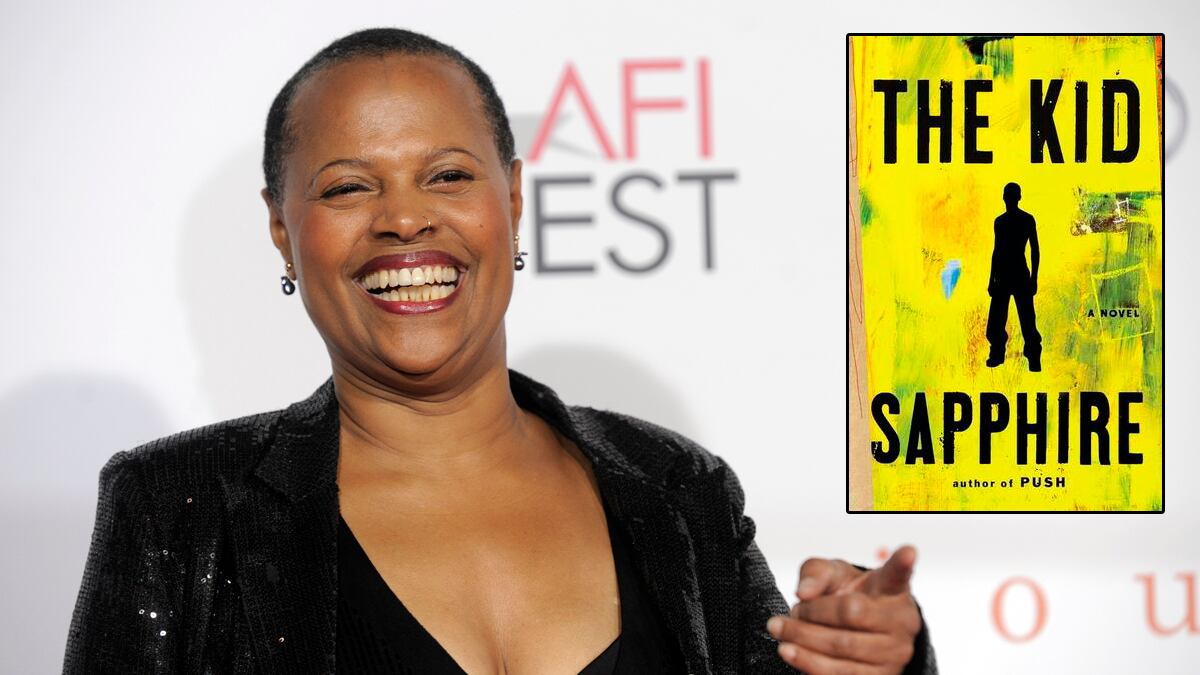Claireece “Precious” Jones, the obese, HIV-positive teenage protagonist of the 1996 book Push and the 2009 movie Precious, is an irrepressible character. So irrepressible that her will overrode that of her creator, the writer Sapphire, who had planned for Precious to give birth to a daughter after being raped by her father. But Precious insisted otherwise. “In my original notes I had that Precious would have a baby girl, then here comes this boy,” Sapphire says with a laugh. “I gave her what she wanted, not what I wanted.”
Now, 15 years later, that boy has grown up, and recounts his own story in The Kid. While the book is technically a sequel to Push, most of the characters are new. The novel opens the day of Precious’s funeral, and we later learn that her abusive mother, Mary, has died of AIDS as well. Precious’ son, Abdul, bounces from foster care to a Catholic orphanage to the streets, suffering beatings and sexual abuse at every turn. Like his mother, Precious, Abdul is a victim of the cycle of abuse (he eventually learns from his great-grandmother how that cycle started) but unlike Precious, he perpetuates the abuse, molesting the younger boys in the orphanage.
“He is the victim and the victimizer,” Sapphire says. “Precious was just a very openhearted person who wanted to be loved and was willing to do whatever it took to get affection. With Abdul, the issues I wanted to explore couldn’t allow for a personality like that. He is a more complex character.”
ADVERTISEMENT

Last year, when the movie version of Push came out, several critics derided it as promoting stereotypes of poor, urban African Americans. Armond White wrote that “Not since The Birth of a Nation has a mainstream movie demeaned the idea of black American life as much as Precious.” In an editorial in The New York Times, Ishmael Reed asserted that “this use of movies and books to cast collective shame upon an entire community doesn’t happen with works about white dysfunctional families.” Sapphire says that had she not already finished much of The Kid, the criticism would have “stopped me dead in my tracks.” But because she had already written the section of the book that goes into Abdul and Precious’ family background, explaining the genesis of the abuse, she felt confident in keeping the rawest, most disturbing scenes in the book. As for her critics, she says, “if all you’re concerned about is how you’ll look to white people, or what white people will think, why don’t you instead heal our children and you won’t have to worry about white people.”
Abdul finds salvation, of sorts, through dance, first at a Harlem YMCA class, then, eventually, in a downtown interpretive dance troupe. Through dance, he learns about artists like Nureyev, Basquiat, and Thelonious Monk. He begins to conceive of himself as an artist too, and, through a relationship with another dancer, moves toward acknowledging the truth about his past and the darkest aspects of his nature. “The logical or realistic way this story would end up would be total disaster,” says Sapphire. “But Abdul’s art allows him to put the brakes on. He’s not going to just be a dancer on stage like Michael Jackson. He’s been through hell, and he’s going put that in his art. He’ll give us what Bill T. Jones gave us.”
Sapphire is in the process of moving from Sunset Park, in Brooklyn, to Manhattan, in part to be closer to the theater, and in part because “I need a doorman. You get to that point in life where you don’t want to have to worry about who’s behind you.” She has sent a copy of The Kid to Lee Daniels, the director who brought Precious to the screen, but says she’s in no hurry to see the book become a movie. Her greater wish for the novel is that it encourage readers to adopt young, African-American boys, so they don’t have to go through what Abdul endures. “We need to start thinking about these children who are destroyed by AIDS,” she says. “They need to be put up for adoption at age 3, 4, 5, when they are still able to love and be loved,” before they get caught up in the foster-care system or fall through the cracks the way Abdul did. “Hey, I wouldn’t adopt Abdul by the end of the book,” she admits.
Sapphire did consider adopting years ago, but ran into roadblocks when she was turned down as a foster parent because she had a day job. “They were giving preference to these women on assistance because they were home during the day. I was like, say what?” The writer hopes that barriers are breaking down to allow single women and gay and lesbian couples to adopt, and hopes they look in their own backyards before going abroad to find children. “No need to go overseas,” she says. “Come to Brooklyn.”






